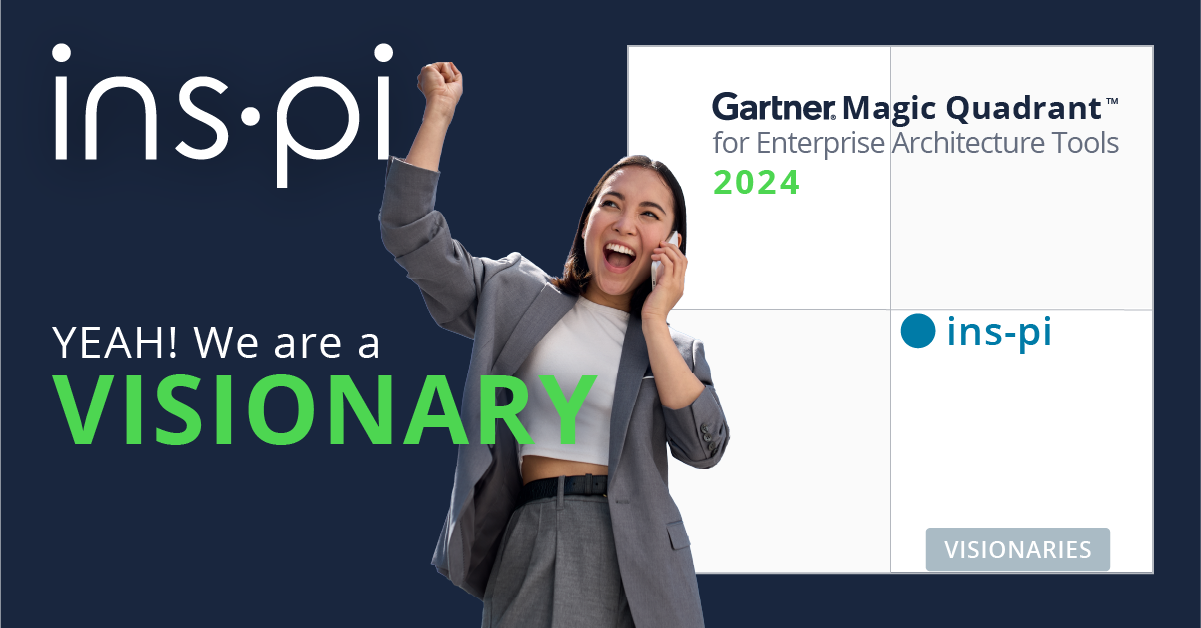How to Win Data Stewards and Influence Senior Management
Data stewards play a crucial role in ensuring the quality and usability of an organization's data, and effective data management can provide...

Why does Enterprise Architecture (EA) fail? This is an evergreen question that people from the EA industry frown upon, and yet when our marketing team asked it on LinkedIn – 2,500+ people responded. In this article, we will cover the results and share some tips from our Senior Partner, Klaus Isenbecker, who has more than a decade’s experience in the field.
Having management on your side with the key topics you want to address with your Enterprise Architecture Initiative is essential. Ensure that the outcomes of what you’re doing with EA are consumable and weighted high by the organization and key stakeholders.
You need to align with company goals and deliver value constantly. Don’t just architect for the sake of architecting.
When you have senior management support, show that internally in your organization and make it visible via different internal channels, e.g., newsletters, employee forums, etc. (Learn how to stay on the right path of EA here.)
Make sure you are using a tool that supports your EA approach and use case. Don’t use a tool just because it is famous, or somebody else has recommended it. Other people’s use cases are not yours, and every EA vendor is made differently. So, find the one that fits you’re use cases; otherwise, you’re just wasting money.
Assemble a team that has the knowledge to drive an Enterprise Architecture team. Or simply surround yourself with people who are more knowledgeable than you or have experience in the field. And then invest in the right training for you and your team.
Architecture is a journey. One that is usually 7 to 8 years long, on which you will mature in your organization. It takes time, so ensure your team is trained for the expertise they need to deliver!
When you surround yourself with the right people, you won’t fall into the common pitfalls of Enterprise Architecture.
Align your business efforts to what your organization sees as critical. Don’t get shut down simply because the organization doesn't understand what you and your team are working towards.
It would be best if you found out what it is that is the most important for the business. But where can you start from? That’s simple – just go to your key stakeholders and figure out where their mindset is. Below you can find a few possible scenarios and what you should do in those cases:
Traditionally, Enterprise Architecture was driven by IT. However, what teams have historically failed to do was align with the business side, and the company changes and initiatives.
A workaround for this today is ensuring your work is done around business capabilities. It is what the business and IT sides of the enterprise can always understand.
Capabilities are what you do in your organization, and your processes are how you do them.
What is a Business Capability?
Many organizations are doing Enterprise Architecture, but it has yet to be officially formalized.
People don’t have official EA titles, and their work is not recognized as Enterprise Architecture. However, it is essential when you get to the point of really driving EA forward, that you formalize those people’s tasks and roles. To do this, you need to make sure that you:
Tools like MS Excel and Visio are fantastic when you’re just starting on your EA journey. However, as your EA team matures, that becomes insufficient. This is why managing your EA portfolio with the right tools is crucial.
If you’re not taking good care of your Data Quality Management from the beginning, you’re making a huge mistake. People need to trust what you’re showing them and the recommendations you're giving.
Unfortunately, nobody likes managing data. So how can you get them to do it? First, ensure you get the data stewards’ immediate manager on board. For more tips, watch our webinar about getting data stewards on your side:
How To Engage With Data Stewards
It is essential to do things in the correct order. If you’re just architecting for the sake of architecting, your EA efforts cannot sustain themselves for a long time. Figure out where the mindset of the key stakeholders you work with is, and then work towards a use-case-driven architecture with that in mind. Have an open conversation with them, ask what a current business challenge is, and link your enterprise architecture initiative to that use case(s). If you do that for them, you will provide value in their eyes!
Here are a few tips to get closer to senior stakeholders:
In short, by recognizing the potential obstacles to success and taking proactive steps to address them, you can improve the odds of success for your enterprise architecture initiatives.
If you're looking for an EA tool to support your unique use cases – let's chat and see if what we have to offer is a good fit for you.
Are you just starting out on your EA journey? Read our tips & tricks post on how to get started as an enterprise architect below:
Getting Started as an Enterprise Architect

Data stewards play a crucial role in ensuring the quality and usability of an organization's data, and effective data management can provide...

INS-PI: A Visionary in Enterprise Architecture, Pioneering a new frontier on the Gartner® Magic Quadrant™ with ServiceNow Miami, FL – November 22,...

How much data do you need to collect when initiating your Enterprise Architecture portfolio? How do you prioritize and know what information...